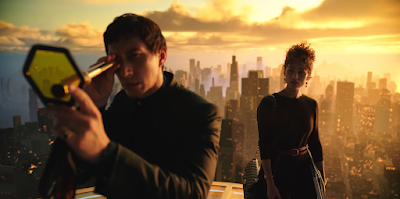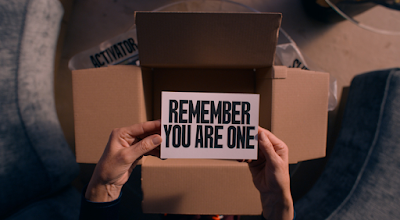Basil, Manuel and Sybil are in town—and they’re bringing a healthy dose of mayhem to your door. Fully immersive, highly interactive and completely original, this is the top-flight show where anything can happen and usually does—and with 70% of the show improvised, it’s never the same twice. With two hours of comedy, three courses of food, and five-star reviews, expect chaos, laughs, and a brilliant night out.
For fans of the beloved British TV series Fawlty Towers, the interactive dining experience Faulty Towers: The Dining Experience offers an unforgettable evening of chaotic comedy and ‘70s-style hospitality. Paying tribute to the original show, created by John Cleese and Connie Booth, this immersive event transports guests directly into the world of Basil, Sybil, and Manuel. As an interactive theatre piece staged in a restaurant, this experience takes the audience from mere viewers to participants, with comedy and chaos unfolding right at the dinner table.
The concept behind Faulty Towers: The Dining Experience is simple yet brilliant: take the classic comedic tension of the Fawlty Towers hotel and bring it to life in a live setting. Audience members are no longer just spectators but esteemed guests at Basil’s mismanaged establishment. The cast for the 2024 New Zealand tour includes Jed McKinney as Basil, Eilannin Harris-Black as Sybil, and Michael Gonsalves as Manuel – each delivering their own spin on these iconic characters.
From the moment you arrive, the show begins. After a brief welcome period, during which guests can refresh at the bar, the infamous Basil and Manuel make their first appearance, and from there, the mayhem quickly ensues. Manuel is collecting the wrong glasses, and Basil misreads and critiques names as guests are hurriedly ushered to their seats, already giving a taste of what’s to come.
Once seated, the real fun begins. The evening revolves around the antics of the three lead characters. Manuel, with his limited understanding of English, provides endless opportunities for misunderstanding and slapstick humour. Basil’s frustration grows as he attempts to manage the chaos, while Sybil steps in from time to time, offering both reprimands and her own brand of unhelpful management. The performance is packed with physical comedy, with bread rolls flying across the room, chairs being misplaced, and Manuel rolling himself over serving dishes.
The show pays homage to the original series by including recognisable snippets and familiar gags. However, even for those unfamiliar with Fawlty Towers, the experience remains entertaining. I shared a table with a group of guests who had seen only a few minutes of the original series, and they were laughing as hard as those more acquainted with the iconic episodes. The blend of slapstick comedy and wordplay ensures that the humour is accessible to all, regardless of whether you’re a die-hard Fawlty Towers fan or not.
The meal itself, a three-course ‘70s-style dinner, is woven into the show in such a way that it becomes part of the performance. Served over two hours, the courses are punctuated by moments of absurdity, including the discovery of "personal items" among the plates and the playful mistreatment of guests – some being temporarily ignored, while others, particularly men, receive comically disproportionate attention. Despite the madness, the food arrives with minimal hitches, thanks to the assistance of the show's additional "competent staff." It’s a testament to the direction of the show that they can balance both performing and ensuring the practicalities of dinner service run smoothly.
Each of the three main actors brings a distinct energy to their roles. Jed McKinney, as Basil, bears a striking physical resemblance to John Cleese, with his height and tone fitting the character. Though his portrayal of Basil’s frustration doesn’t quite reach the towering levels of Cleese’s rage, McKinney’s more restrained approach results in an engaging and comfortable performance that avoids alienating the audience. It’s clear he has studied the character well, as his body language and exasperated expressions are spot on.
The true comedic powerhouse of the night, however, is Michael Gonsalves as Manuel. His portrayal of the lovable but confused Spanish waiter anchors much of the evening’s humour. With excellent comedic timing and infectious energy, Gonsalves excels in the role, effortlessly navigating the physical demands of the character. His facial expressions, clumsy movements, and broken English have the audience in stitches. Even during quieter moments, Gonsalves manages to keep the energy up with improvised jokes, adding a layer of unpredictability to the performance. Though his moustache and hair don't look as authentic, his brilliant use of physical comedy and charming performance more than compensate.
Eilannin Harris-Black, as Sybil, takes on a smaller role compared to her counterparts, but she is nonetheless crucial to maintaining the chaotic flow of the evening. Popping in and out of scenes, she plays the role of a mini-antagonist, often nudging the action along and helping to direct Basil and Manuel when things spiral out of control. Her sharp tongue and no-nonsense attitude mirror the original character, and while she may not have the same stage time as Basil or Manuel, her presence is felt in every scene.
One of the key aspects of Faulty Towers: The Dining Experience is its reliance on improvisation. The performers skilfully interact with the audience, creating a sense of spontaneity and unpredictability that keeps the energy high, with the audience's real birthdays and wedding anniversaries merged into the experience. Manuel’s misunderstandings and Basil’s impatience lead to unique interactions with different tables, ensuring no two shows are the same. The interactive nature of the event means that each audience member’s experience feels personal, as the cast tailors jokes and moments to the reactions of the crowd.
Despite the improvisation and new elements, the show remains firmly rooted in the world of Fawlty Towers, with many of the jokes being recycled from the original script. However, this recycling feels more like a tribute than a lack of originality. For fans of the show, seeing the German goose step or Basil’s barely-contained rage unfold in person is a treat. At the same time, the fresh jokes and improvisational moments ensure the performance is much more than a simple re-enactment of TV episodes.
Faulty Towers: The Dining Experience offers a delightfully chaotic evening of entertainment, blending physical comedy, quick wit, and immersive interaction. Whether you're a long-time fan of the original series or new to the world of Basil, Sybil, and Manuel, this show guarantees laughter from start to finish. The 2024 cast, with McKinney, Gonsalves, and Harris-Black, deliver a memorable performance that both honours the original and adds its own twist. If you're looking for an evening of hilarity with a side of delicious nostalgia, this dining experience is not to be missed.
Booking fee included in ticket price. All tickets include a 3-course meal and 2-hour interactive show.





























